Polymers in the Writing Lab
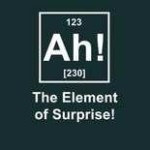 Mamacita says: Yes, it’s true. I use polymers in my writing labs. I also use all kinds of science in my reading labs. I’ve done this for many years. And guess what: this WORKS.
Mamacita says: Yes, it’s true. I use polymers in my writing labs. I also use all kinds of science in my reading labs. I’ve done this for many years. And guess what: this WORKS.
Here’s the thing about learning: everything is connected to everything else. As soon as a student understands this one little point, things change.
Today’s lesson instantly connects to yesterday’s lesson, and last week’s lesson, and that lesson in first grade when you didn’t understand a word but now you do, and it happened all by itself. Or did it. . .It’s like we woke up one morning and suddenly something we didn’t understand before makes sense. We spend our lives connecting the dots, and if we do it right, we’ll have a far cooler end result than the horsie or duckie we ended up with on those preschool sewing cards.
Everything we learn and know is so ready, so EAGER, to connect to new things, and to each other. Every student in my labs is smart, and ready to learn new things – perhaps not in conventional ways, but I have NEVER been accused of being conventional (I consider this a compliment.) and ALL are ready to learn, whether they realize it or not. In my experience, people who learn best in unconventional ways are the creative ones, the thinkers, the ones who DO things, and often the kinds of things that are going to save us all. I love this kind of student. All I have to do is keep tossing out potential fascinations.
That’s my job. I throw fascinations in people’s faces. Sometimes I lightly toss them. Sometimes I barrel them into a student’s face as if I were chucking a cannonball at him. Sometimes I see a fascination drifting by and I blow it around the room and make sure every pair of eyes follows it, even for just a few seconds. I’ve been known to use vocabulary that some might deem, shall we say, unconventional, at times.
The things we learn while laughing, we almost always remember. Well, I do.
Mundane things are mundane only if we are content to let them be mundane. Old dogs CAN be taught new tricks. There’s no such thing as boredom unless we choose boredom.
Polymers can illustrate these things.
I like to put a few pinches of dull, hard, multi-faceted rock-salt-like WaterJelly Crystals in the bottom of a clear glass bowl. This represents a thought. Or a personality. Or an idea. Or a single word. Or anything you want it to represent. These things remain the same as long as nothing more is added.
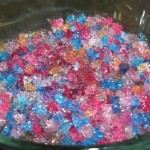 So we add something more, and before class is over, we get jewels. A bowl full to the very brim, of jewels. Soft, yet strong. All the colors of the rainbow. We started with a few pieces of what looked like nothing. We added one thing. ONE THING. Now we have a bowl full of wonder, capable of doing all kinds of useful things. (Ask my students; they can tell you!)
So we add something more, and before class is over, we get jewels. A bowl full to the very brim, of jewels. Soft, yet strong. All the colors of the rainbow. We started with a few pieces of what looked like nothing. We added one thing. ONE THING. Now we have a bowl full of wonder, capable of doing all kinds of useful things. (Ask my students; they can tell you!)
Today, we used Insta-Snow to demonstrate that often the addition of one single simple thing can INSTANTLY transform a little piece of learning into a really big deal. A few pinches of plain white salt-like powder in the bottom 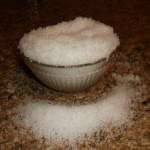 of a bowl, a little water, and HOLY COW, the stuff rises up before our very eyes and overflows the bowl and covers the table with white fluffy coolness. . . you know, just like our thoughts when, more often than we realize, one simple additional thing makes a simple thought explode with wonder.
of a bowl, a little water, and HOLY COW, the stuff rises up before our very eyes and overflows the bowl and covers the table with white fluffy coolness. . . you know, just like our thoughts when, more often than we realize, one simple additional thing makes a simple thought explode with wonder.
Last week we used a different polymer. I had my students take these home 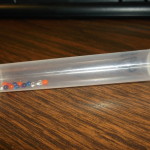 and asked them to report to me what they observed.
and asked them to report to me what they observed.
Let’s just say that it’s a good thing I had the students dump these little polymers into a glass or bowl before adding the water. They’re the size of large shooter marbles now.
Some connections are made instantly. Some connections take a little more time. This is easily illustrated with various polymers.
And, all of these things being polymers, they’ll last pretty much forever. I’ve got polymer Christmas decorations that are over four years old now, and because they’re sealed up, they’ll never shrink. Let your polymers dry out again and you can reuse them for years. YEARS. Store them in baggies or in Tupperware. Polymers are so easy.
There are too many cool things about these polymers to mention in one post, long as it already is, but here are two I want to stress:
Firstly, polymers are harmless. They aren’t food, but if you eat them, they won’t hurt you. This means you can include your young children in the fun without worrying about what could happen if they taste a polymer. Nothing will happen, that’s what happens. Polymers are 100% non-toxic – totally harmless.
Secondly, polymers won’t hurt your carpets. If you have a spill, just let them dry and shrink down and vacuum them up. They won’t hurt your carpets, or your dog, or your children.
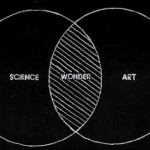 These polymers are so versatile – science, art, any other part of the curriculum, sensory projects, crafts. . . there are few areas where polymer products can’t be an enhancement. They’re inexpensive, too – especially when you consider that they last virtually forever.
These polymers are so versatile – science, art, any other part of the curriculum, sensory projects, crafts. . . there are few areas where polymer products can’t be an enhancement. They’re inexpensive, too – especially when you consider that they last virtually forever.
This is not a paid or sponsored post. This is what I do all day. Don’t you wish you were me? I LOVE my job!
Next up in writing lab: “I’m dumping this on your head.”
You have been warned, students.
It’s only words, and words are all I have, to take your heart away. . . .*
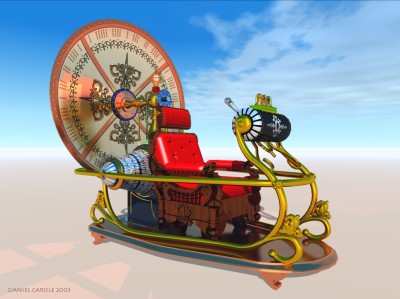 Why not go out on a limb? Isn’t that where the fruit is?” –Frank
Why not go out on a limb? Isn’t that where the fruit is?” –Frank
 that. Watch them sleeping. Each rise and fall of the covers is already part of the past. History. It’s already happened.
that. Watch them sleeping. Each rise and fall of the covers is already part of the past. History. It’s already happened.I had wondered about it before I said something. (past perfect: both actions are in the past, but one is more recent than the other. Two times are represented; both past.)I have always enjoyed teaching this concept, and with adult students, it’s even more awesome. I’ve had students weep, during this lesson.
The Time Is Always Right To Do What Is Right – Martin Luther King, Jr.
 Mamacita says: Why is this day a holiday in most communities? (This community has only just recently started acknowledging MLK Day as a holiday; for years, none of our schools closed.) (They still don’t close for Veteran’s Day.)
Mamacita says: Why is this day a holiday in most communities? (This community has only just recently started acknowledging MLK Day as a holiday; for years, none of our schools closed.) (They still don’t close for Veteran’s Day.)
However, intelligent, sensitive, educated people understand that today deserves respect because a man who dedicated his entire life to peaceful means of acquiring freedom for all people fully deserves to be recognized, and there are still, shamefully, communities that do not consider this of any importance. Making it a holiday forces people to look at his name on their calendar, if nothing else.
If he had advocated violence, it would have been different. Violence does not deserve recognition. If he had advocated “something for nothing,” it would have been different. Bums do not deserve recognition.
But Dr. Martin Luther King advocated equal rights for all people, not just for whites and not just for blacks and not just for whites & blacks. He dedicated his life to gaining equal rights for EVERYONE.
And I can’t help but listen to a speaker with such beautiful grammar. His grammar enhances his message.
May we all have this same dream.
Careful, grammatically-correct language and an almost poetic speaking style will always get my attention. It’s an assumption on my part, of course, but I associate good grammar with people who actually know what they’re talking about.
Martin Luther King, Jr. definitely knew what he was talking about, and he knew HOW to present it.






